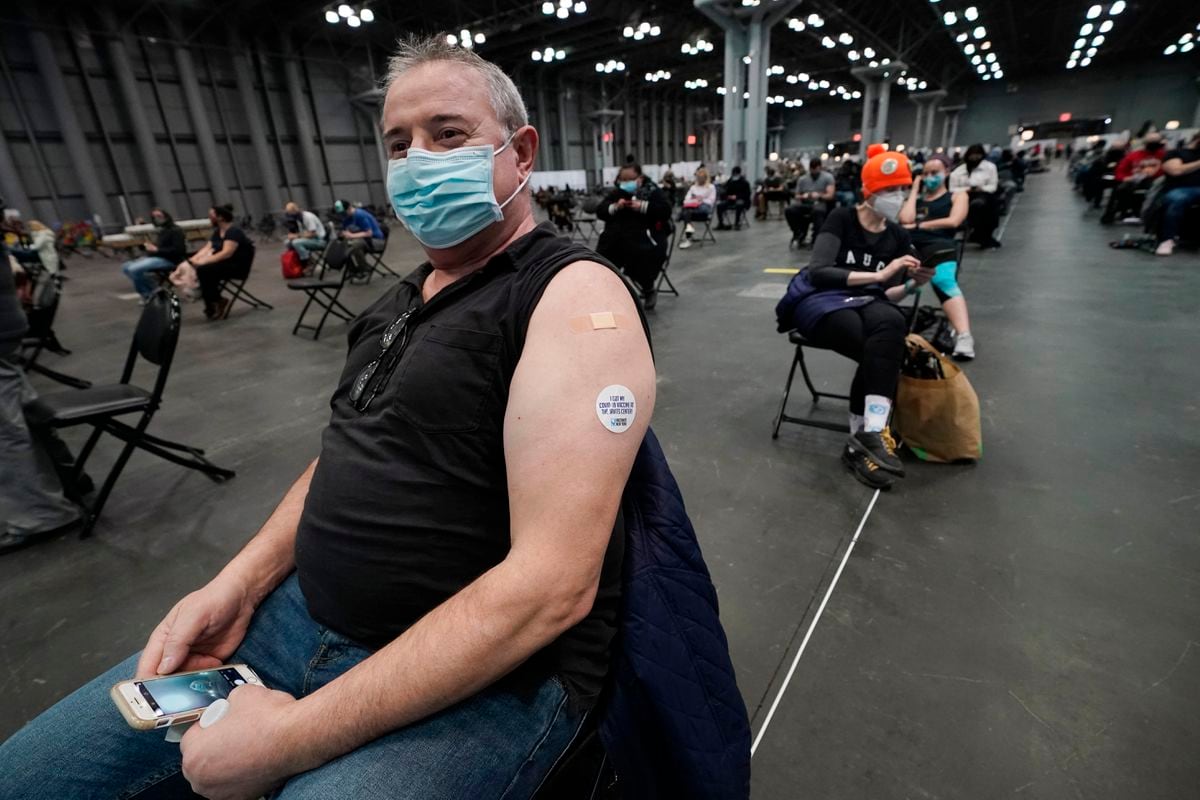Waiting lists to get vaccinated with leftover doses. The parallel system that since January has allowed many New Yorkers to be immunized against COVID-19 without belonging to any risk group has slowed down as the age ranges were widened – starting this Tuesday, all 16-year-old residents will be able to receive it going forward – but it continues to generate demand.
This Thursday, in an institute north of Manhattan converted into a vaccination center – like many schools, social centers, sports halls and pharmacies, among other establishments – John signed up by hand in a list, in the old way. “On the internet I have tried many times, there are many web pages that collect the available appointments, but they hang or they are all the given hours or it is your turn at the other end of the city,” he explains.
The institute, halfway between his work and his home, seems to him the most comfortable option. “There have been no queues for weeks; it works very well, diligently, and several colleagues have been vaccinated like this; you just have to register and wait. Sooner or later it ends up touching you, ”adds the 35-year-old man.
The system is simple: every afternoon, between five and seven, the administrators of Somos ―a health network widely spread throughout the city to which state and local authorities have entrusted, among other agents, with the medical management of the campaign. – They call in strict order those named according to the amount of surpluses that result from the non-appearance of the persons conventionally cited. Once thawed, the vial must be used within six hours or it will end up in the trash, hence the generous plan b.
“We put 300 vaccines a day, seven days a week, we don’t even close on Good Friday. There are days when there is no excess dose because all the people mentioned come. Other days there are usually around eight, no more; sometimes just one or two. We are calling those who are on the waiting list, but among them we also prioritize the elderly, chronically ill or with comorbidity ”, explains Yvelise Estévez, from Somos. “The lucky person receives an SMS advising him that there is a dose for him and he has a period of two hours to present himself.” Although eligibility is now general, and there are no quotas or age bands, the parallel system will continue, Estévez stresses, “so as not to waste a single vial.”
Since vaccination began last January – when it was theoretically accessible only to risk groups and health workers and then essential – the picaresque and the internet have shaken hands so that the anxious New Yorker could be immunized ahead of time. The most helpful thing, with time available, was to venture to the center in question at seven in the afternoon and try your luck, many times after notice from community social networks such as NextDoor, lavish in messages about places and offers. Many others, hard, for example in the field hospitals set up by major hospitals in some stadiums.
One degree above the neighborhood queo, websites such as Dr B have systematized supply and demand with a formal registry where the citizen who wishes receives notifications from the centers with extra doses, although this formula also follows the guidelines of the health authorities to discriminate against who is administered before the remains. The success of the web has been such that in its first month of life it has had 500,000 subscribers.
Another modality when it comes to getting vaccinated in the Big Apple are the centers pop-up, makeshift or ephemeral, like the ones that New York State will open this weekend in fifty social housing complexes and churches. A specific offer, aimed at population groups more reluctant to be vaccinated, such as African Americans, who make up the majority of the inhabitants of these gigantic housing blocks. In other areas of the city, the City Council has deployed a system of mobile units to facilitate vaccination of the most recalcitrant residents.
–


